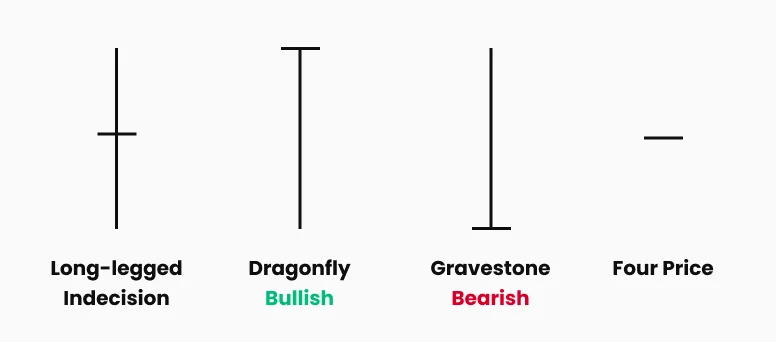

Technical Analysis – A Beginner’s Guide
Technical analysis is a powerful methodology traders use to predict future price movements and identify potential trading opportunities. This comprehensive guide will explain the fundamental concepts of technical analysis, explore key indicators and chart patterns, and show you how to apply these tools to enhance your trading strategy with TMGM.
What is Technical Analysis?
Based on market data, technical analysis predicts a security's probable future price movement—such as a stock, forex pair, or commodity. Unlike fundamental analysis, which examines economic factors, company performance, and industry trends, technical analysis focuses exclusively on price action and trading volumes.
The theory behind technical analysis rests on three key principles:
- Market Action Discounts Everything: All relevant information (economic factors, company fundamentals, market psychology) is already reflected in the price.
- Prices Move in Trends: Once established, price trends are more likely to continue than reverse.
- History Tends to Repeat Itself: Market patterns observed in the past tend to recur as they reflect consistent human psychology.
Technical traders believe that current or past price action in the market provides the most reliable indicators for predicting future price movements. BTraders can make informed decisions about market entry and exit points by analysing chart patterns, identifying trends, and utilizing various technical indicators,
Start analyzing charts like a professional with TMGM's advanced trading platforms.
Charting on Different Time Frames
One of the first decisions a technical analyst must make is selecting the appropriate time frame for analysis. The time frame you choose should align with your trading style and objectives:
Popular Time Frames for Technical Analysis:
- 5-minute chart: Used primarily for very short-term trading and scalping
- 15-minute chart: Favored by day traders who want more context than a 5-minute chart provides
- Hourly chart: Offers a balanced view for intra-day traders
- 4-hour chart: Popular among swing traders who hold positions for several days
- Daily chart: Standard for position traders and longer-term analysis
- Weekly/Monthly charts: Used for identifying long-term trends and major support/resistance levels
The time frame you select significantly impacts your analysis. Price movement that appears significant on a 15-minute chart may be merely noise when viewed on a daily or weekly chart. Conversely, a critical support level visible on a daily chart might not be apparent in shorter time frames.
To illustrate this concept, consider how differently the same price action can appear across various time frames. A market in a strong uptrend on a daily chart might show a pullback or consolidation pattern on a 1-hour chart, offering different trading signals depending on which time frame you analyze.
Candlesticks
Candlestick charting is the most commonly used method of showing price movement on a chart. A candlestick is formed from the price action during a single period for any time frame. Each candlestick on an hourly chart shows the price action for one hour, while each on a 4-hour chart shows the price action during each 4 hours.
Candlesticks are "drawn" / formed as follows: The highest point of a candlestick shows the highest price security traded during that period, and the lowest point indicates the lowest price during that time. The "body" of a candlestick (the respective red or blue "blocks" or thicker parts, of each candlestick) indicates the opening and closing prices for the period. If a blue candlestick body is formed, this indicates that the closing price (top of the candlestick body) was higher than the opening price (bottom of the candlestick body); conversely, if a red candlestick body is formed, then the opening price was higher than the closing price.
Candlestick colors are arbitrary choices. Some traders use white and black candlestick bodies (the default color format and, therefore, the most commonly used); others may choose to use green and red or blue and yellow. Whatever colors are chosen, they provide an easy way to determine whether the price closed higher or lower at the end of a period. Technical analysis using a candlestick chart is often easier than a standard bar chart, as the analyst receives more visual cues and patterns.
Candlestick Patterns – Dojis
Candlestick patterns, which are formed by either a single candlestick or by a succession of two or three candlesticks, are some of the most widely used technical indicators for identifying potential market reversals or trend changes.
Doji candlesticks, for example, indicate indecision in a market that may be a signal for an impending trend change or market reversal. The singular characteristic of a doji candlestick is that the opening and closing prices are the same, so the candlestick body is a flat line. The longer the upper and/or lower "shadows" or "tails" on a doji candlestick – the part of the candlestick that indicates the low-to-high range for the period – the stronger the indication of market indecision and potential reversal.
There are several variations of doji candlesticks, each with its distinctive name:
Figure 1: Variations of doji candlesticks
- The typical doji is the long-legged doji, where the price extends about equally in each direction, opening and closing in the middle of the price range for the period. The appearance of the candlestick gives a clear visual indication of indecision in the market. When a doji like this appears after an extended uptrend or downtrend in a market, it is commonly interpreted as signaling a possible market reversal, a trend change in the opposite direction.
- When appearing after a prolonged downtrend, the dragonfly doji signals a possible upcoming reversal to the upside. Examination of the price action indicated by the dragonfly doji explains its logical interpretation. The dragonfly shows sellers pushing the price substantially lower (the long lower tail), but at the end of the period, the price recovers to close at its highest point. The candlestick indicates a rejection of the extended push to the downside.
- The gravestone doji's name hints that it represents bad news for buyers. The opposite of the dragonfly formation, the gravestone doji, indicates a strong rejection of an attempt to increase market prices, thereby suggesting a potential downside reversal may follow.
- The rare four-price doji, where the market opens, closes, and in between conducts all buying and selling at the same price throughout the period, is the epitome of indecision. This market shows no inclination to go anywhere in particular.

Technical Indicators – Moving Averages
Figure 2: Technical Indicators – Moving Averages
In addition to studying candlestick formations, technical traders can draw from a virtually endless supply of technical indicators to assist them in making trading decisions.
Moving averages are the single most widely used technical indicator. Many trading strategies utilize one or more moving averages. A simple moving average trading strategy might be, "Buy as long as price remains above the 50-period exponential moving average (EMA); Sell as long as price remains below the 50 EMA".
Moving average crossovers are another frequently employed technical indicator. A crossover trading strategy might be to buy when the 10-period moving average crosses above the 50-period moving average.
The higher the moving average number, the more significant the price movement is considered. For example, a price crossing above or below a 100—or 200-period moving average is usually considered much more significant than a price above or below a 5-period moving average.
Technical Indicators – Pivots and Fibonacci Numbers
Daily pivot point indicators, which usually also identify several support and resistance levels in addition to the pivot point, are used by many traders to identify price levels for entering or closing out trades. Pivot point levels often mark significant support or resistance levels or where trading is within a range. If trading soars (or plummets) through the daily pivot and all the associated support or resistance levels, this is interpreted by many traders as "breakout" trading that will shift market prices substantially higher or lower in the direction of the breakout.
Daily pivot points and their corresponding support and resistance levels are calculated using the previous trading day's high, low, opening and closing prices.
Fibonacci levels are another popular technical analysis tool. Fibonacci was a 12th-century mathematician who developed a series of ratios that is very popular with technical traders. Fibonacci ratios, or levels, are commonly used to pinpoint trading opportunities, trade entry, and profit targets that arise during sustained trends.
The primary Fibonacci ratios are 0.24, 0.38, 0.62, and 0.76. These are often expressed as percentages – 23%, 38%, etc. Note that Fibonacci ratios complement other Fibonacci ratios: 24% is the opposite, or remainder, of 76%, and 38% is the opposite, or remainder, of 62%.
As with pivot point levels, numerous available technical indicators automatically calculate and load Fibonacci levels onto a chart.
Fibonacci Retracements
Figure 3: Technical Indicators – Fibonacci Retracements
Fibonacci retracements are the most often used Fibonacci indicator. After security has been in a sustained uptrend or downtrend for some time, there is frequently a corrective retracement in the opposite direction before the price resumes the overall long-term trend. Fibonacci retracements are used to identify good, low-risk trade entry points during such a retracement.
For example, assume that the price of stock "A" has climbed steadily from $10 to $40. Then, the stock price begins to fall back a bit. Many investors will look for a good entry-level to buy shares during such a price retracement.
Fibonacci numbers suggest that price retracements likely extend a distance equal to 24%, 38%, 62%, or 76% of the uptrend move from $10 to $40. Investors watch these levels for indications that the market is finding support from where prices will begin rising again. For example, if you were hoping for a chance to buy the stock after approximately a 38% retracement in price, you might enter an order to buy around the $31 price level. (The move from $10 to $40 = $30; 38% of $30 is $9; $40 – $9 = $31)
Fibonacci Extensions
Continuing with the above example, now you've bought the stock at $31 and are trying to determine a profit target to sell at. For that, you can look to Fibonacci extensions, which indicate how much higher the price may extend when the uptrend resumes. The Fibonacci extension levels are pegged at prices that represent 126%, 138%, 162%, and 176% of the original uptrend move, calculated from the low of the retracement. A 38% retracement of the original move from $10 to $40 turns out to be the retracement low, then from that price ($31). In that case, you find the first Fibonacci extension level and potential "take profit" target by adding 126% of the original $30 move upward. The calculation goes as follows: Fibonacci extension level of 126% = $31 + ($30 x 1.26) = $68 – giving you a target price of $68.
Once again, you never actually have to do any of these calculations. You just plug a Fibonacci indicator into your charting software, and it displays all the various Fibonacci levels.
Pivot and Fibonacci levels are worth tracking even if you don't personally use them as indicators in your trading strategy. Because so many traders base buying and selling moves on pivot and Fibonacci levels, there is likely to be significant trading activity around those price points, which may help you better determine probable future price moves.
Technical Indicators – Momentum Indicators
Moving averages and most other technical indicators primarily focus on determining likely market direction, up or down.
There is another class of technical indicators, however, whose main purpose is not so much to determine market direction as market strength. These indicators include such popular tools as the Stochastic Oscillator, the Relative Strength Index (RSI), the Moving Average Convergence-Divergence (MACD) indicator, and the Average Directional Movement Index (ADX).
By measuring the strength of price movement, momentum indicators help investors determine whether current price movement more likely represents relatively insignificant, range-bound trading or an actual, significant trend. Because momentum indicators measure trend strength, they can serve as early warning signals that a trend is coming to an end. For example, suppose security has been trading in a strong, sustained uptrend for several months, but then one or more momentum indicators signal the trend steadily losing strength. In that case, it may be time to think about taking profits.
Because momentum indicators generally only signal strong or weak price movement but not trend direction, they are often combined with other technical analysis indicators as part of an overall trading strategy.
Figure 4: Technical Indicators –MACD
Technical Analysis – Conclusion
Keep in mind the fact that no technical indicator is perfect. None of them gives signals that are 100% accurate all the time.
The smartest traders always watch for warning signs that signals from their chosen indicators may be misleading. Technical analysis, done well, can certainly improve your profitability as a trader. However, you may do more to improve your fortunes in trading by thinking about how best to handle things if the market turns against you rather than just fantasizing about how you're going to spend your millions.
Free Trading Courses and Resources
Success in trading requires skill, knowledge, and practice. TMGM provides free courses and webinars to help traders at all levels. Test your strategies risk-free with a demo account funded with US$100,000 in virtual capital before trading live.
เทรดอย่างชาญฉลาดวันนี้






เข้าบัญชี
ได้ทันที







